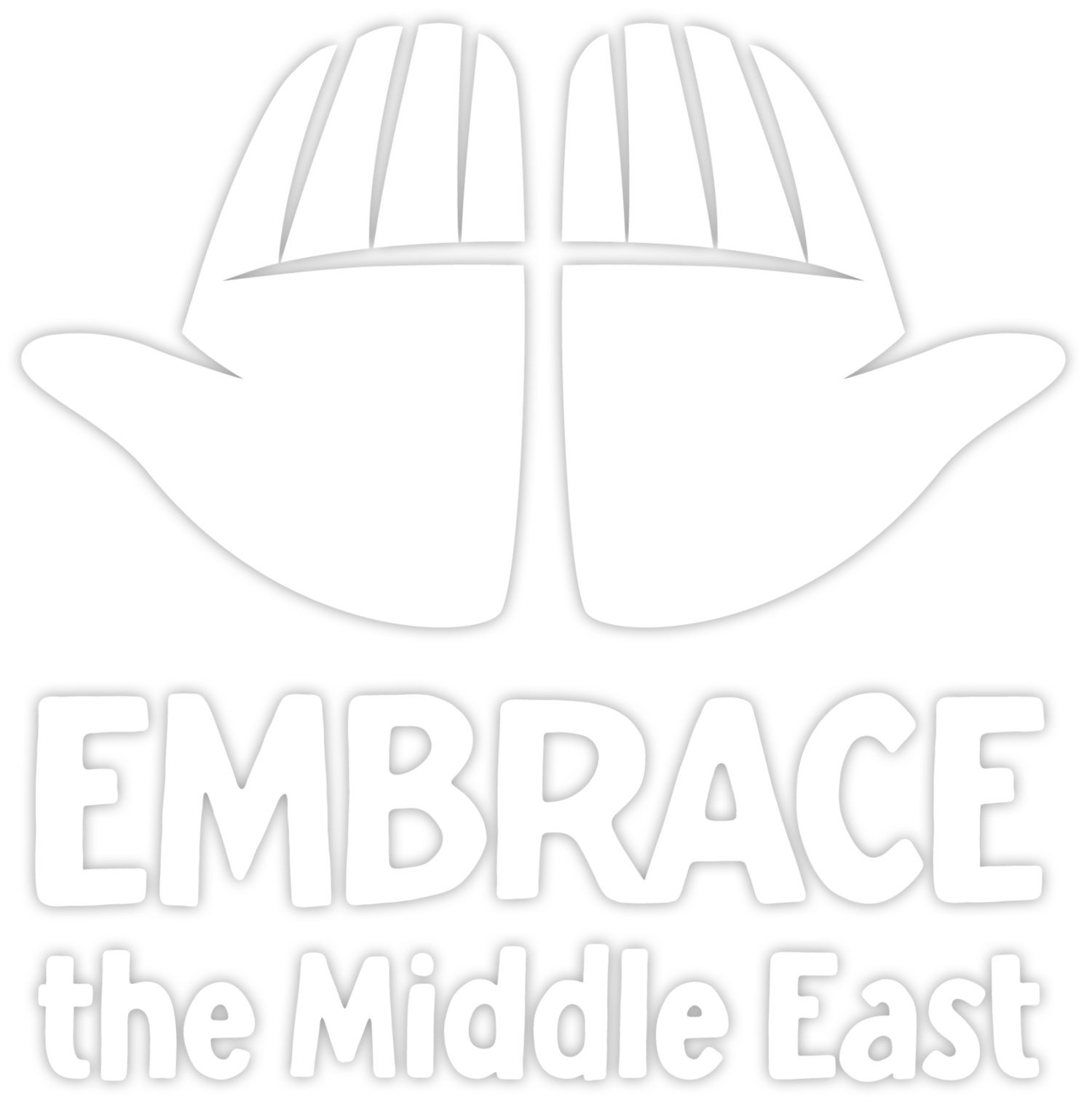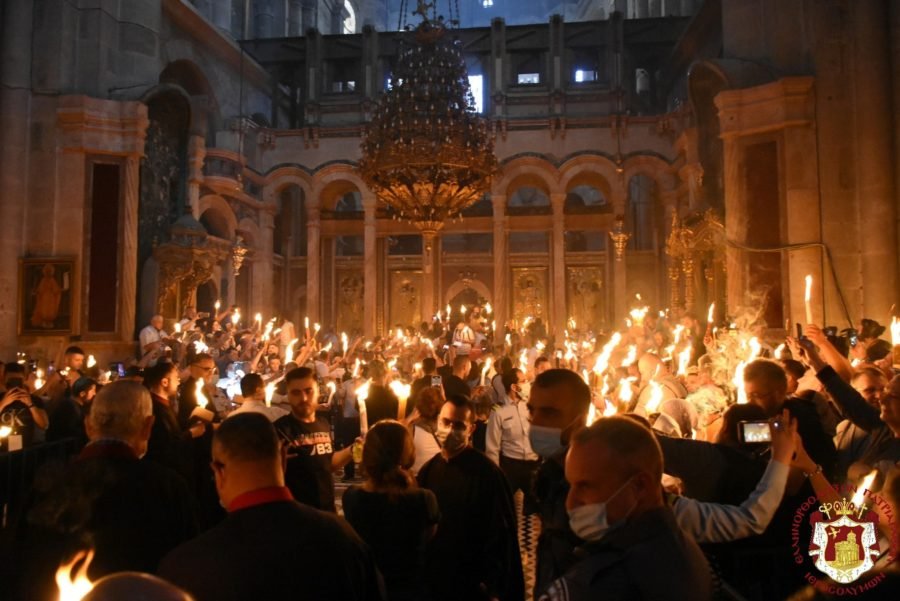One Easter – Two Very Different Celebrations
April 2022
The Ceremony of Holy Fire
Anita Delhaas, chief executive of the Community of the Holy Sepulchre, a charity dedicated to helping Christians in the Holy Land to flourish, writes for us about attending this year’s ceremony of the Holy Fire in the Old City of Jerusalem – an experience of mixed blessings.
This year I celebrated Easter twice! Once according to the Gregorian calendar, and the following week according to the Julian calendar. Both events celebrate the resurrection of Jesus Christ – this year I experienced the event in two very different circumstances!
Easter in the Netherlands, where I live, was celebrated on a beautiful, peaceful, sunny Sunday morning in spring. For many months churchgoers had been unable to attend services due to the pandemic and were excited to return to ‘normal’ in-person worship on this special day. Church attendance has dwindled all over Europe lately – COVID restrictions only made this worse. Church leaders are doing everything to encourage their congregations to resume Sunday services and worship together as a community, instead of tuning in to online options.
In the Holy Land, the situation is very different. Despite many restrictions during the pandemic, people never stopped worshipping in local churches and most buildings stayed open. However, my experience of Easter this year (and that of many others), was marred by injustice, violence and sadness for my brothers and sisters in the Holy Land.
Now that travel restrictions are lifted, everyone was looking forward to the Holy Fire ceremony his year. The Orthodox tradition of the Holy Fire occurs annually on the day preceding Easter Sunday. During the ceremony blue light is said to emit within Jesus’ tomb, rising from the marble slab covering the stone bed where Jesus’ body is believed to have been placed for burial. The slab is now in the Church of the Holy Sepulchre in the Old City of Jerusalem.
The Holy Fire ceremony has been celebrated since the year 162 and is one of the most important events in the church calendar for Eastern Christians. Once the fire emerges from Jesus’ tomb, it is passed on to the crowds in the church.
Afterwards the Holy Fire is sent by special transport (airplane or car) all over the Orthodox world - including to Lebanon, Jordan, Greece, Bulgaria, Romania, Georgia and as far as Iraq - where it is received by church and state leaders.
The light is believed to have healing powers and people consider it extra special if they receive this ‘holy fire’ at the Holy Sepulchre in Jerusalem itself. To receive this light in person, people hold a bunch of 33 long and narrow wax candles, representing the 33 years Christ lived on earth among us, and help light each other’s candles by saying ‘Christ is risen, He is risen indeed’.
As Chief Executive of The International Community of the Holy Sepulchre (ICOHS) a charity which supports the 13 official churches in Jerusalem and aims to ensure that Christians continue to flourish in the Holy Land, I was invited to attend the Holy Fire ceremony this year. I was excited to be able to celebrate Easter for a second time and participate in this centuries old ceremony.
However, I had no idea what I was about to experience. I did not image how complicated and stressful, an Easter event can be!
Days prior to the ceremony, I noticed press statements issuing from the Church leaders in Jerusalem, referring to negotiations with the local authorities about the number of people who could attend the event and the concerns local Palestinian Christians and pilgrims had about their ability to attend this years’ Easter celebration.
The Church of the Holy Sepulchre
Before COVID restrictions approximately 10,000 people typically attended the Holy Fire ceremony. This year only 1,700 people were allowed by Israeli authorities to attend.
On the Saturday morning, before Easter Sunday, the Christian quarter of Jerusalem (where the Holy Sepulchre Church is situated) was barred off and no one could leave or enter this section of the old city. Long lines formed at the entrances with people from the West Bank, Gaza, Jordan, Egypt as well as local faithful waiting to enter and attend the Holy Fire ceremony. Strangely enough Jews with prayer shawls were allowed through the barriers to go and pray at the Western Wall, but no Christians were allowed in.
People waited at the gates of the city, but only a few with special invitations were let in and only after lots of negotiations. After the scout bands with bagpipes and drums entered the small streets and marched towards the Holy Sepulchre a few Christians were allowed to join them. I was among the ‘happy few’ who could enter, because we received special badges, but really felt bad for so many people who were held back forcefully by the police.
After pushing through several more ‘checkpoints’, I finally reached the church and once more had to negotiate my way in, while being harassed and ‘interrogated’ by local police. What a stark contrast to attending the Dutch Easter celebration a week earlier!
Local authorities said they were limiting access to the event due to security reasons. Israel experienced several disasters at Jewish and Muslim celebrations. Last year a stampede left 45 people dead at a Jewish holy site (Mount Meron) and the previous week had seen clashes between Muslim worshipers and the police at the Al-Aqsa Mosque compound during Ramadan.
According to Reverend Dr. Don Binder, of the Anglican Episcopal Church in Jerusalem, “the ‘safety and security’ rationale is merely a pretext for keeping Palestinian Christians from worshipping inside the Holy City. As such Church leaders of Holy Sepulchre were right to issue bold statements against the draconian action, correctly identifying this as a religious freedom violation”.
Experiencing Easter twice this year has helped me to understand for myself the importance and privilege of being able to celebrate in freedom. It motivates me to - not only pray for my brothers and sisters in the Holy Land - but to engage in creating more awareness, advocating and acting to support a flourishing Christian community in the Holy Land. Let’s echo the words of Reverend Binder “It should be a matter of grave concern for those around the world of any faith to see the religious freedom of the Christian minority so violated is a severe erosion of human rights in the Holy City that is sacred to all three Abrahamic faiths”.
By Anita Delhaas, Chief Executive ICOH




